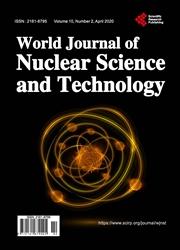Safe Controlled Storage of SVBR-100 Spent Nuclear Fuel in the Extended-Range Future
引用次数: 3
Abstract
Experience of operating reactor facilities (RF) with lead-bismuth coolant (LBC) has revealed that it is possible to perform safe refueling in short terms if the whole core is replaced and a kit of the special refueling equipment is used. However, comparing with RFs of nuclear submarines (NS), in which at the moment of performance of refueling the residual heat release is small, at RF SVBR-100 in a month after the reactor has been shut down, at the moment of performance of refueling the residual heat release is about 500 kW. Therefore, it is required to place the spent removable unit (SRU) with spent fuel subassemblies (SFSA) into the temporal storage tank (TST) filled with liquid LBC, in which the conditions for coolant natural circulation (NC) and heat removal via the tank vessel to the water cooling system are provided. After the residual heat release has been lowered to the level allowing transportation of the TST with SRU in the transporting-package container (TPC), it is proposed to consider a variant of TPCs transportation to the special site. On that site after the SRU has been reloaded into the long storage tank (LST) filled with quickly solidifying liquid lead, the TPCs can be stored during the necessary period. Thus, the controlled storage of LSTs is realized during several decades untill the time when SNF reprocessing and NFC closing are becoming economically expedient. On that storage, the four safety barriers are formed on the way of the release of radioactive products into the environment, namely: fuel matrix, fuel element cladding, solid lead and steel casing of the LST.未来大范围SVBR-100乏燃料的安全控制储存
使用铅铋冷却剂(LBC)运行反应堆设施(RF)的经验表明,如果更换整个堆芯并使用一套特殊换料设备,则可以在短期内进行安全换料。然而,与核潜艇在换料性能时刻的余热释放量较小相比,在SVBR-100 RF上,在反应堆停堆后一个月内,换料性能时刻的余热释放量约为500kw。因此,需要将带有乏燃料组件(SFSA)的废可移动单元(SRU)放入充满液体LBC的临时储罐(TST)中,在此储罐中提供冷却剂自然循环(NC)和通过储罐容器向水冷却系统散热的条件。当余热释放降低到允许SRU在运输包装容器(TPC)中运输TST的水平后,建议考虑将TPC运输到特殊地点的一种变体。在该地点,当SRU重新装载到充满快速凝固的液态铅的长储罐(LST)中后,tpc可以在必要的时间内储存。因此,lst的可控存储在几十年内实现,直到SNF再处理和NFC关闭在经济上变得有利的时候。在该储存库上,在放射性产物向环境释放的过程中形成了四个安全屏障,即:燃料基质、燃料元件包壳、固体铅和LST的钢制外壳。
本文章由计算机程序翻译,如有差异,请以英文原文为准。
求助全文
约1分钟内获得全文
求助全文

 求助内容:
求助内容: 应助结果提醒方式:
应助结果提醒方式:


